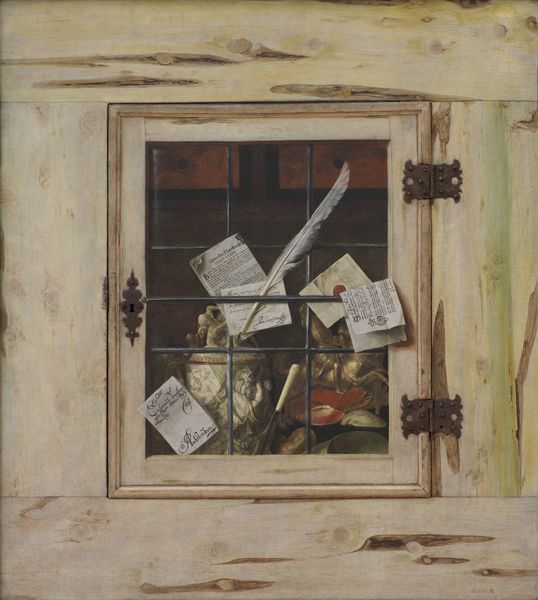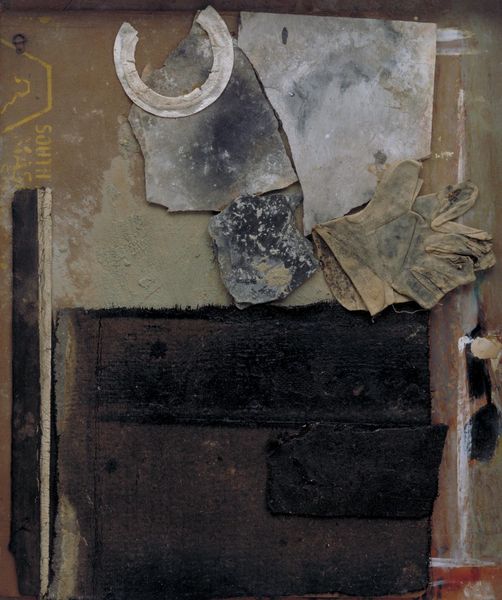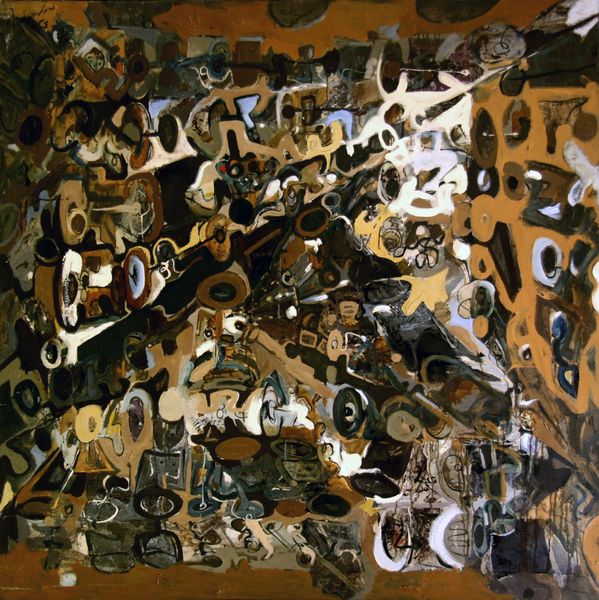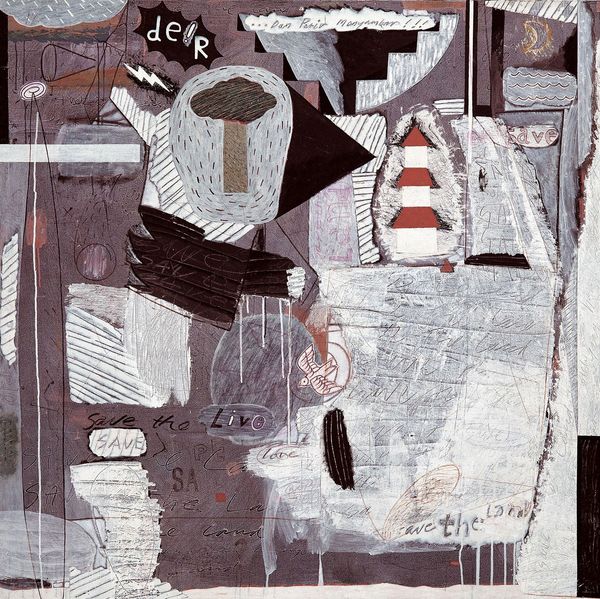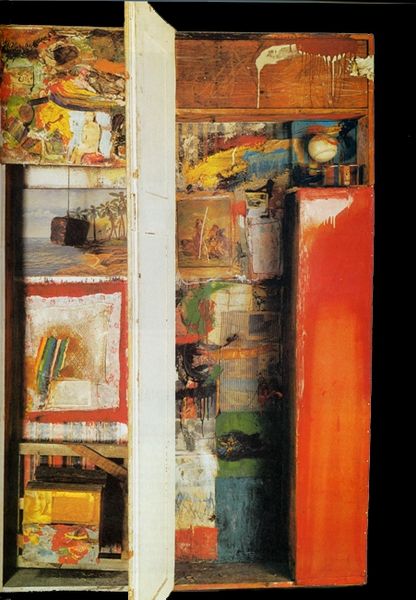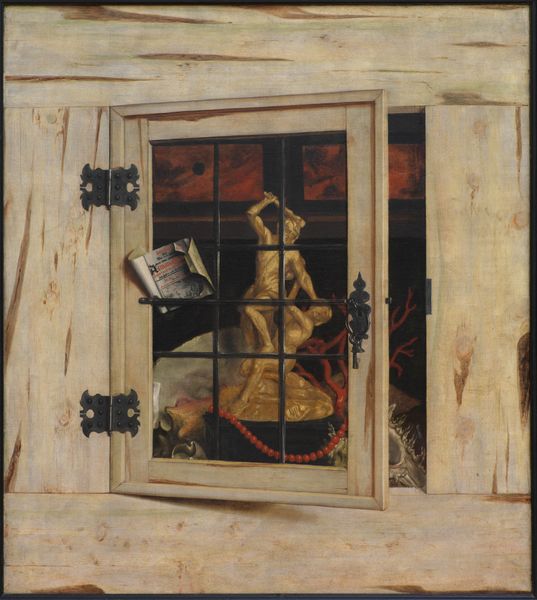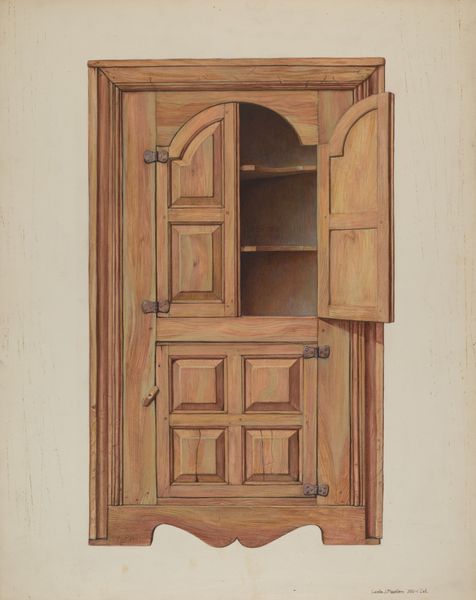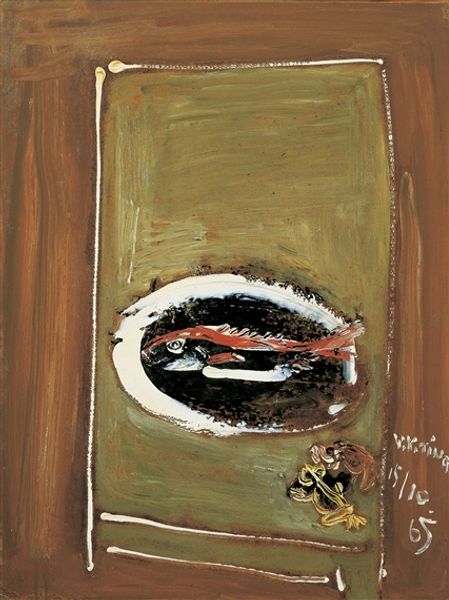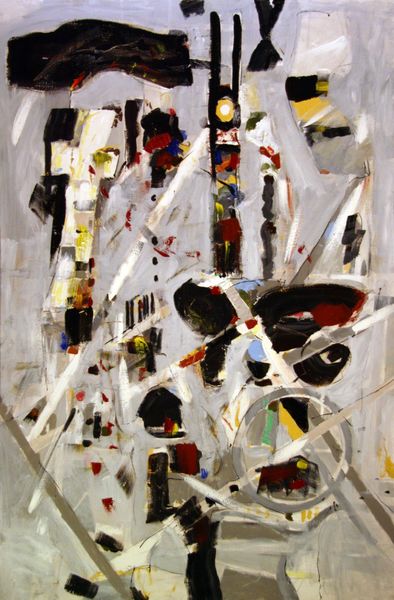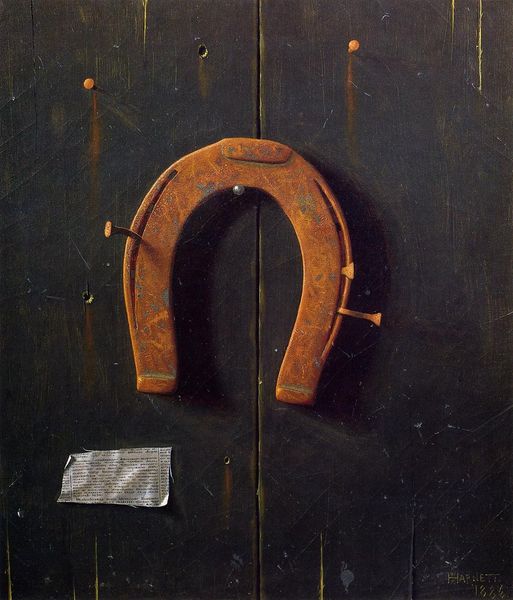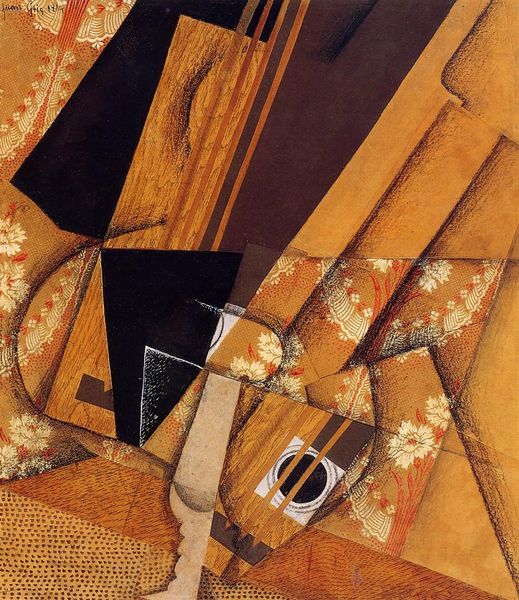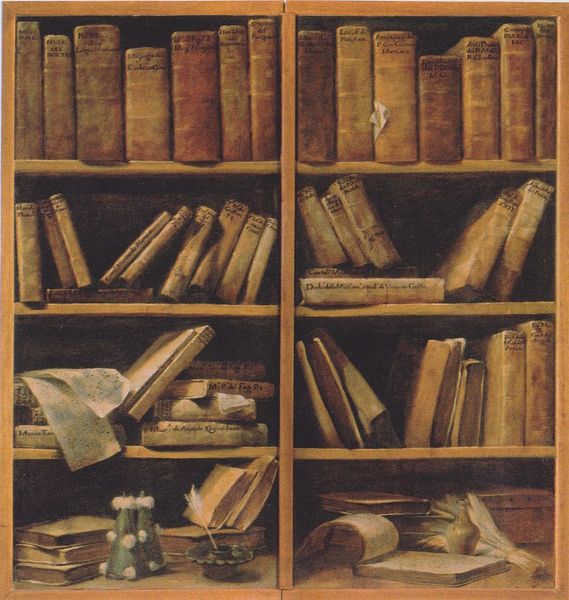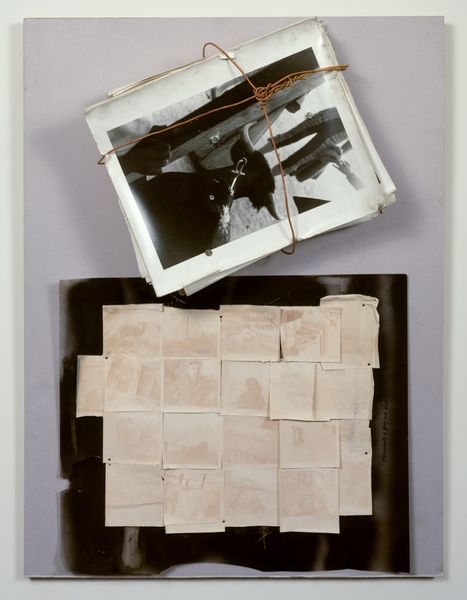
A trompe l'oeil of an open glazed cupboard door, with numerous papers and objects 1666
0:00
0:00
oil-paint
#
baroque
#
dutch-golden-age
#
oil-paint
#
oil painting
#
genre-painting
#
trompe-l'oeil
Copyright: Public domain
Painted by Cornelis Norbertus Gysbrechts around the 17th century, this illusionistic painting depicts a cupboard overflowing with papers and objects. The documents, rendered with meticulous detail, evoke a sense of human presence, hinting at stories and secrets. The quill, prominently displayed, embodies intellect and creativity, yet also fragility. This symbolism echoes in the Vanitas tradition, where similar objects represent the ephemeral nature of life and human endeavors. Think of the skull, a staple in such compositions, reminding us of mortality. Consider how this theme has evolved - from ancient memento mori to modern art's explorations of existential angst. The items here provoke a deep, perhaps subconscious, awareness of time's passage. Through such powerful imagery, Gysbrechts creates more than just a visual trick. This cupboard door speaks of human lives, the weight of memories, and the ongoing dance between presence and absence.
Comments
No comments
Be the first to comment and join the conversation on the ultimate creative platform.
